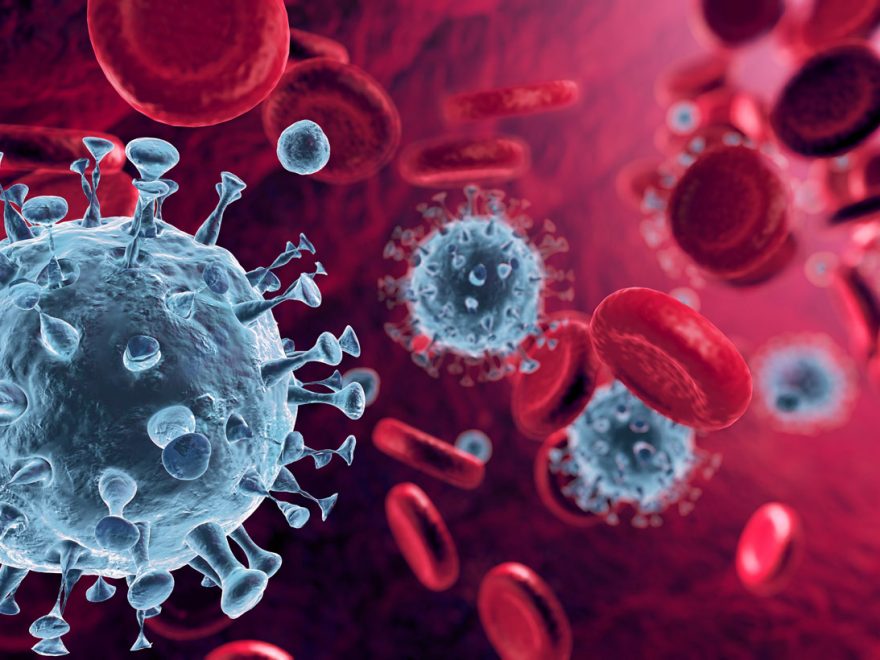 Using U.S. taxpayer funded grants, SARS-CoV-2 was intentionally engineered from a bat virus at the Wuhan Institute of Virology, according to a $1 billion lawsuit filed October 5, 2022 in the Supreme Court of New York, County of Rockland. Defendants in the suit are:
Using U.S. taxpayer funded grants, SARS-CoV-2 was intentionally engineered from a bat virus at the Wuhan Institute of Virology, according to a $1 billion lawsuit filed October 5, 2022 in the Supreme Court of New York, County of Rockland. Defendants in the suit are:
- EcoHealth Alliance Inc., which received U.S. grants, through Anthony Fauci, with which it subcontracted the Wuhan lab to conduct gain-of-function research to engineer a bat virus with the ability to infect humans.
- Peter Daszak, president of EcoHealth Alliance, and his wife, immunologist Janet Cottingham-Daszak.
- Ralph Baric, professor at the University of North Carolina.
- Ian Lipkin, professor at Columbia University.
- “John and Jane Does” to be determined.
The suit was filed by attorneys Patricia Finn, of Nanuet, N.Y. and Thomas Renz, of Fremont, Ohio on behalf of the following plaintiffs:
- Kathleen McKinniss, of Worthington, Ohio, whose mother, Rosemarie McKinniss, was killed on April 24, 2020 from exposure to SARS-CoV-2.
- Carin Rosado, a former emergency medical technician with the New York City Fire Department, who suffered injuries from exposure to SARS-CoV-2 and later was fired after refusing to take the city-mandated Covid “vaccine.”
- Geraldine Finn, of Rockland County, N.Y., whose husband was killed in a hospital as a result of exposure to SARS-CoV-2. The complaint doesn’t specify whether there is a relationship between attorney Patricia Finn and plaintiff Geraldine Finn.
The suit alleges that the defendants were engaged in gain-of-function research that intentionally created SARS-CoV-2, negligently allowed the virus to escape the Wuhan lab – either intentionally or accidentally – then covered up the leak by denying the true origin of the virus as it spread around the world. As the virus spread, Fauci, the U.S. and Chinese governments and international organizations continued to suggest that it was a naturally occurring virus that jumped species and first infected humans at an outdoor meat market near the Wuhan lab.
Gain-of-function research involves engineering a virus that is not harmful to humans into a newly created virus that can infect humans.
“The Covid-19 pandemic could have been avoided,” the complaint says.
The complaint alleges that the defendants continued to conduct gain-of-function research, funded by U.S. taxpayers, even after a moratorium was issued against such work during the Obama administration in 2014. Baric, who was conducting gain-of-function research at the University of North Carolina, petitioned the U.S. National Institutes of Health (NIH) for an exemption to the moratorium, which was granted.
According to the lawsuit, EcoHealth has received $16.9 million in grant funding specifically directed to gain-of-function research from NIH and the U.S. Agency for International Development (USAID) since 2008. During that time, EcoHealth funneled sub-grants to the Wuhan Lab. In 2014, Dazsak, in noting the “accomplishments” of his U.S. grant-enabled research, said EcoHealth had collected 121 bat fecal samples from Laos which the Wuhan lab’s Dr. Zheng-Li tested for viruses. Zheng-Li is commonly known in the media as “Bat Lady.”
According to a 2015 research paper co-authored by Baric, Zheng-Li was “successful on at least one occasion in developing a genetically modified coronavirus SARS-CoV-2 that could jump across species and could infect humans and seemed to be resistant to treatment and prevention with vaccines,” according to the complaint.
 According to the lawsuit, on February 23, 2016, during an event called “Where Will The Next Pandemic Come From?” hosted by the New York Academy of Medicine, Daszak explained, “We found other coronaviruses in bats, a whole host of them; some of them looked very similar to SARS. So we sequenced the spike protein, the protein that attaches to cells; then we – I didn’t do this work, my colleagues in China did this work – you create pseudo-particles, you insert the spike proteins from those viruses, see if they bind to human cells, each step of this you move closer and closer to this virus could really become pathogenic in people.”
According to the lawsuit, on February 23, 2016, during an event called “Where Will The Next Pandemic Come From?” hosted by the New York Academy of Medicine, Daszak explained, “We found other coronaviruses in bats, a whole host of them; some of them looked very similar to SARS. So we sequenced the spike protein, the protein that attaches to cells; then we – I didn’t do this work, my colleagues in China did this work – you create pseudo-particles, you insert the spike proteins from those viruses, see if they bind to human cells, each step of this you move closer and closer to this virus could really become pathogenic in people.”
The complaint says that two years before the pandemic, U.S. Embassy officials visited the Wuhan lab and reported that safety was inadequate, and one official specifically warned about the lab’s experiments on bat viruses and the potential for human transmission and the risk of a SARS (severe acute respiratory syndrome) pandemic.
After the virus was released from the Wuhan lab, the complaint says, “[T]he defendants, acting in concert, failed to disclose to and warn plaintiffs, and all those similarly situated, of the dangers associated with exposure to the defendants’ ultra-hazardous SARS-CoV-2 virus. Upon information and belief, defendants collaborated to conceal SARS-CoV-2’s origins by publishing articles ‘debunking’ the assertion of lab-made origins for the SARS-CoV-2.”
A few weeks before the filing of the suit, Renz issued a report that he said provides nearly indisputable evidence that SARS-CoV-2 was created in the Wuhan lab in what seemed to be a joint project between an EcoHealth and the Wuhan Institute of Virology. This document provides firsthand whistleblower testimony from Dr. Andrew Huff, former vice president of EcoHealth. The document includes more than 130 citations to corroborate Huff’s testimony.
So far, the mainstream corporate media have shown no interest in covering either a $1 billion lawsuit filed in the Supreme Court of New York nor a whistleblower’s testimony about the origins of the deadliest global health crisis in recorded human history.
You can download the complaint here.
Follow me on social media: